
The daily news is hopeful and it looks as if the garden might open sometime in July. The photographs sent this week make that a very exciting prospect. When I wrote about the Aeonium tabuliforme in April I didn’t indicate the overwhelming success of the germination; neither did I realise at the time how the abundance of plants was going to be used.
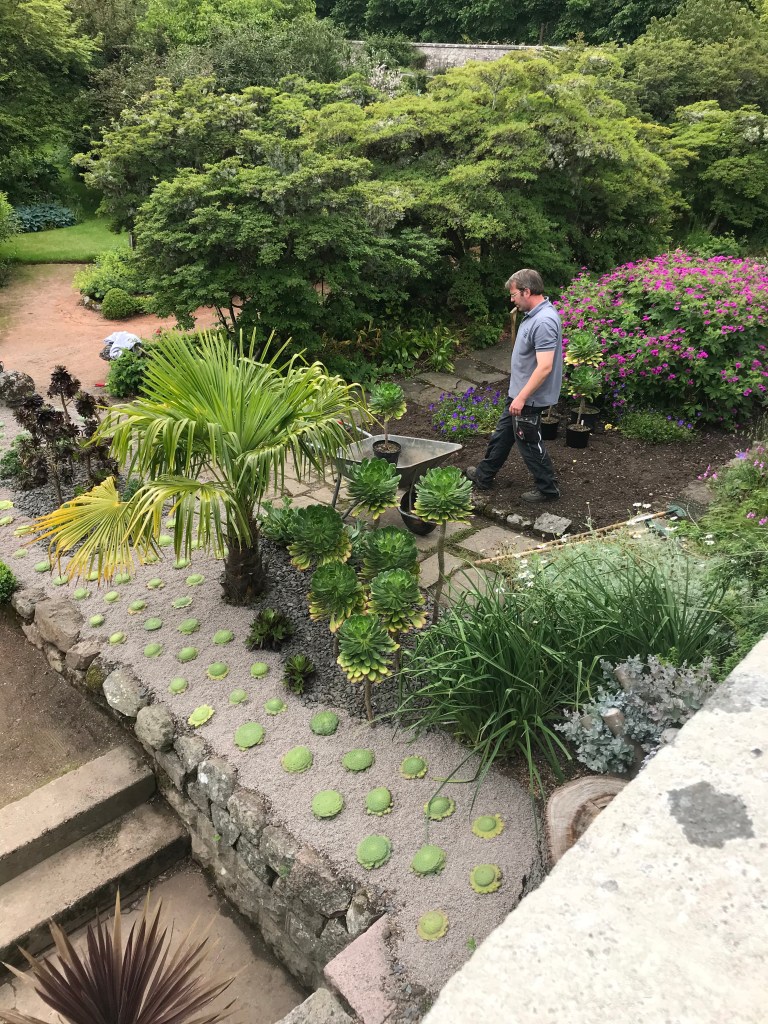
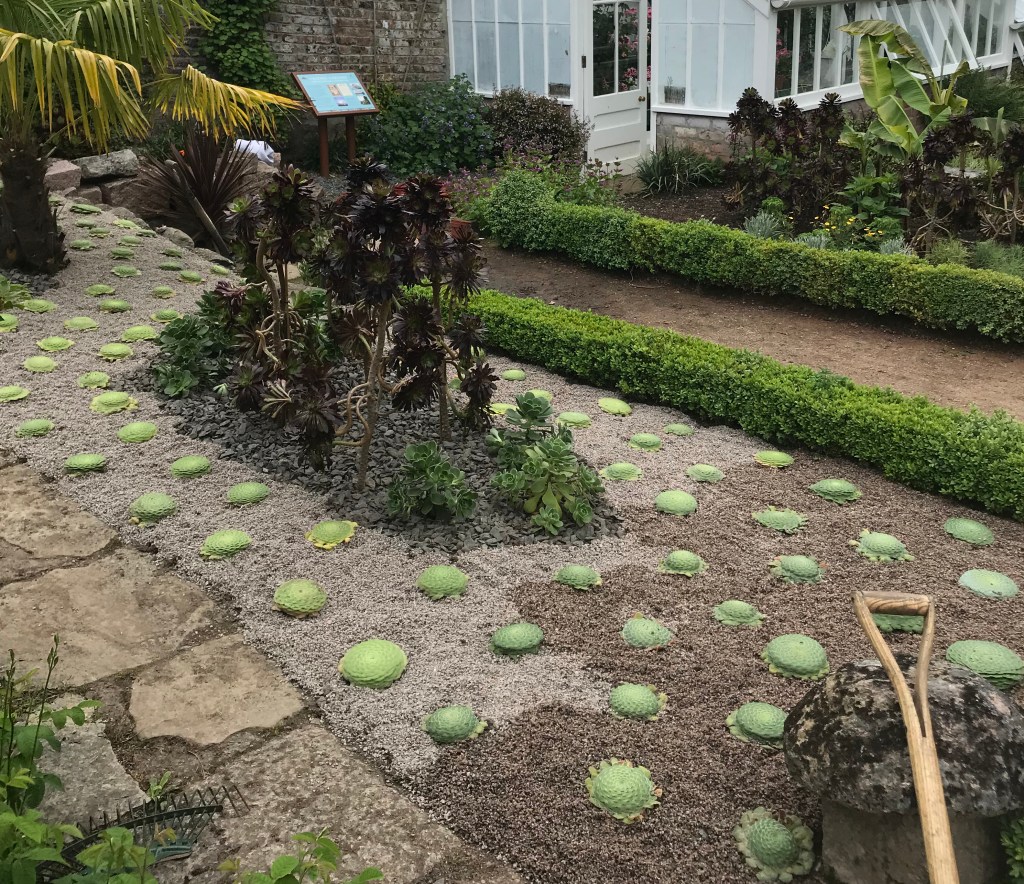
I am thrilled to see that some of the Echium pininana have made it through the winter. Most died in the frost, but a protective netting erected over those in the Upper Pool Garden did its job and the survivors are looking great. Perhaps they will flower this year. I was surprised to see above the echiums, on the Victorian Terrace, the Euphorbia characias wulfenii that I photographed back in February is still putting on a show.
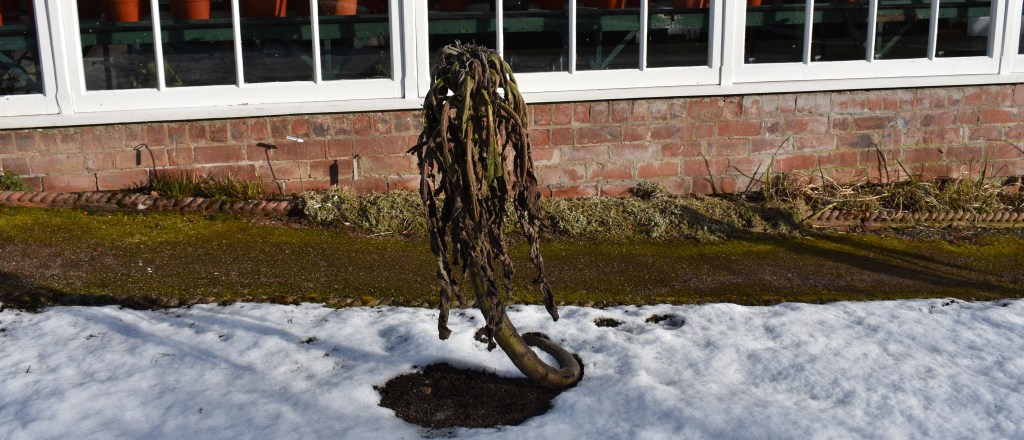
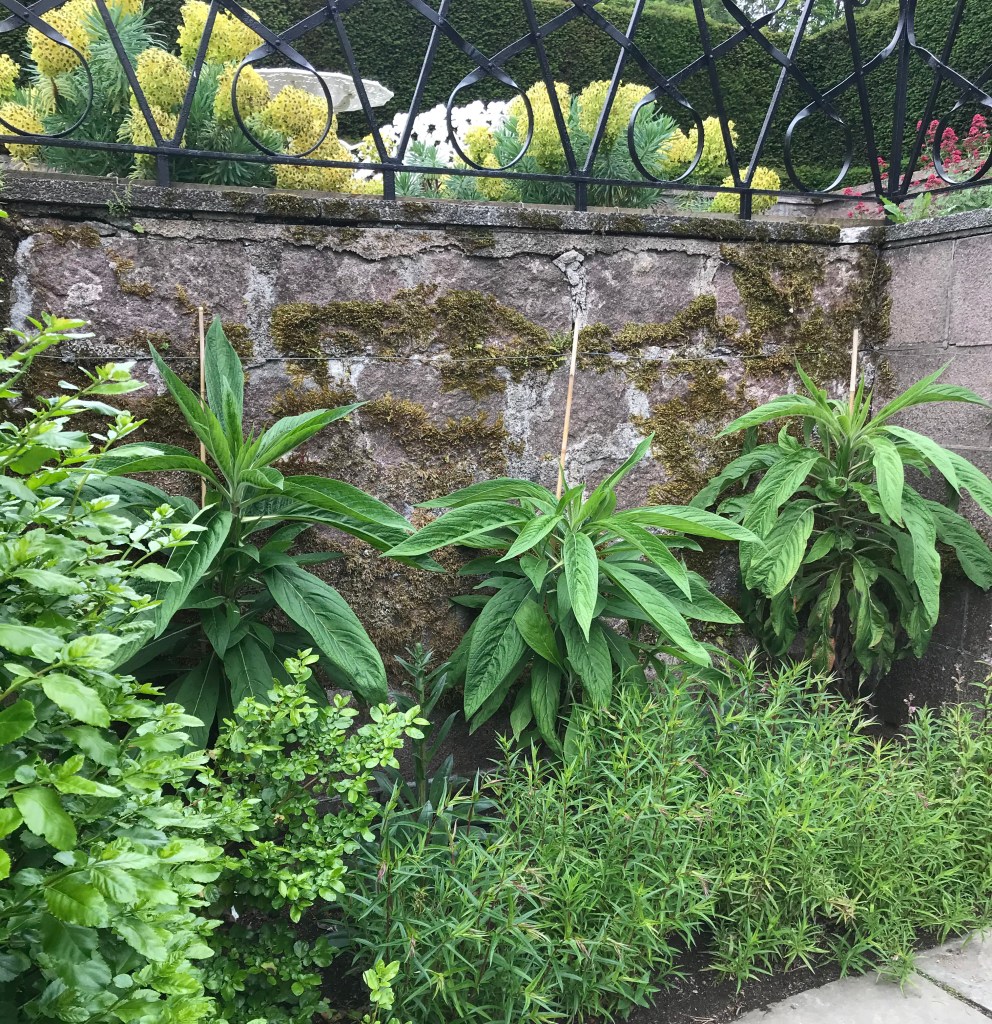
I have always been fond of the thistle (often erroneously called the Scotch thistle) Onopordum acanthium. In my last garden it would appear spontaneously having self-seeded. It was always allowed to grow though sometimes carefully replanted in a more convenient place. I was particularly pleased to see a whole row now upstanding in architectural splendour on the Aviary Terrace.
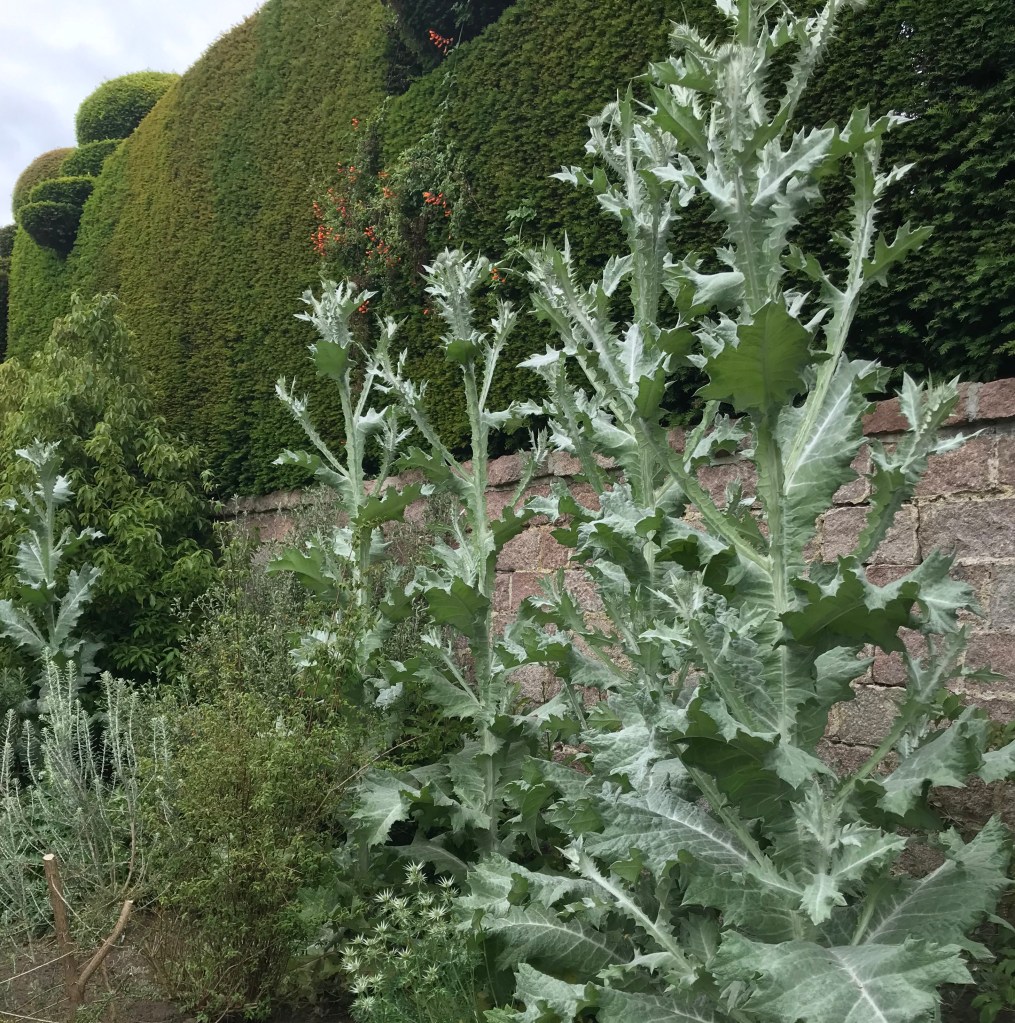
There are some intriguing new flowers in the garden. I am familiar with the leaves of Begonia luxurians but have never seen it in flower; Zaluzianskya ovata is completely new to me and I didn’t even guess that it is related to the phlox. Night scented phlox is its common name and I can see the connection now that I know! It’s a shame that the scent is best in the evenings when the garden is not open even in normal times. I think I’ll stick to the common name.
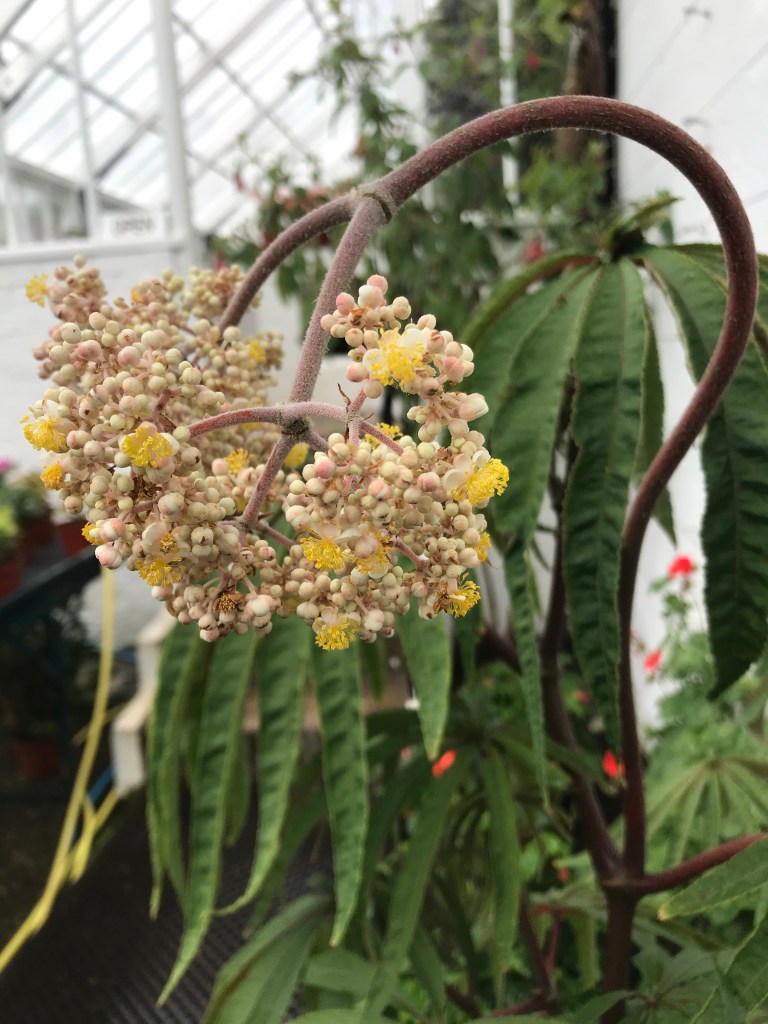
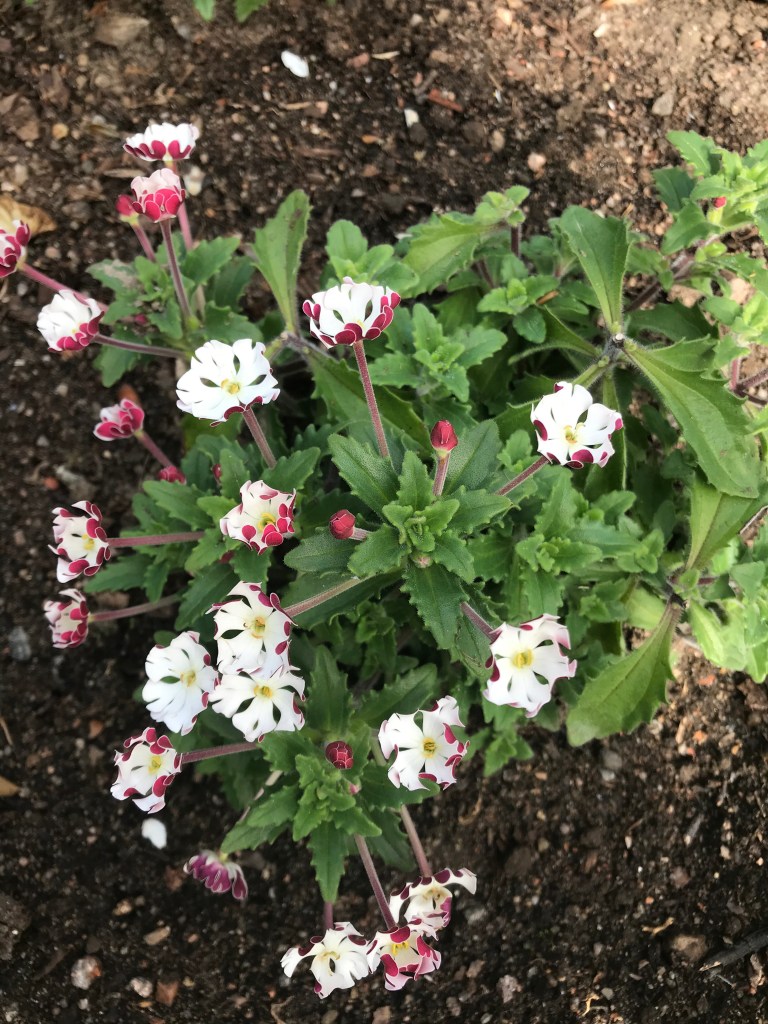
The June Border is approaching its peak and I see that the Evolution Garden has been progressing – its looks as if the nicandra, cosmos and maybe ammi have been planted out there.
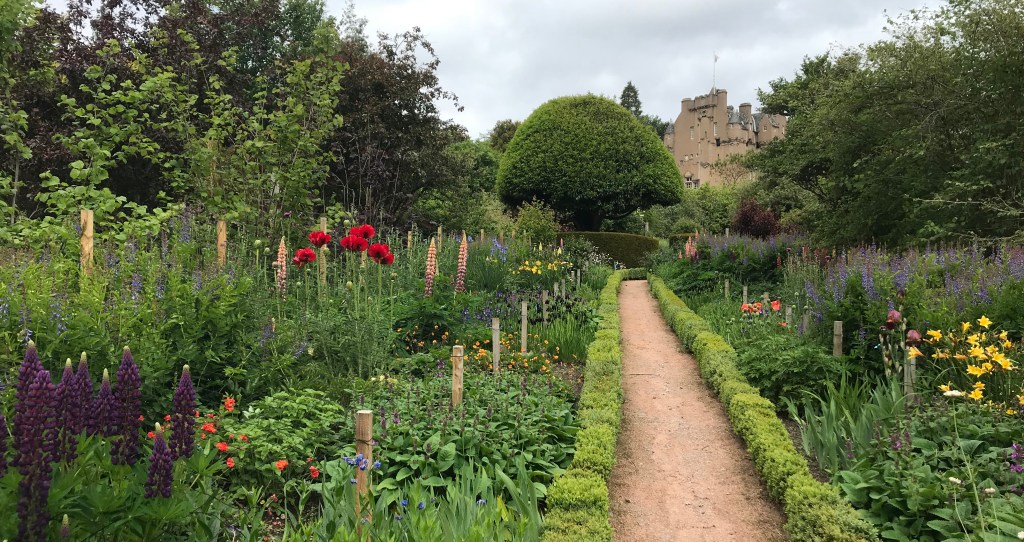
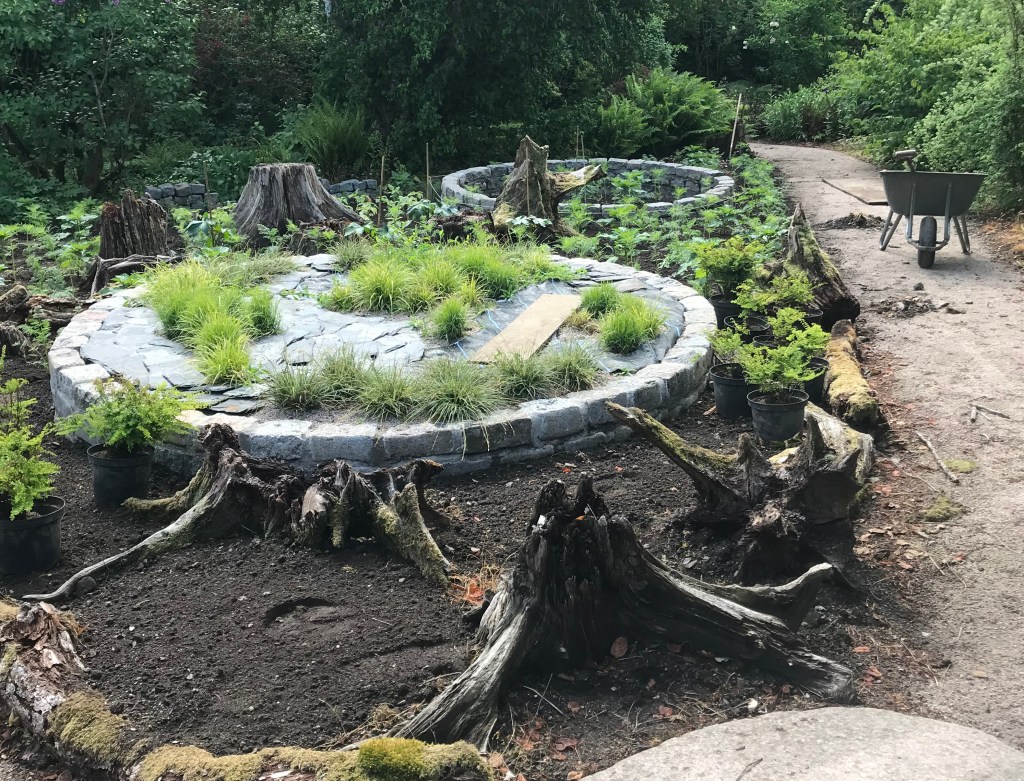
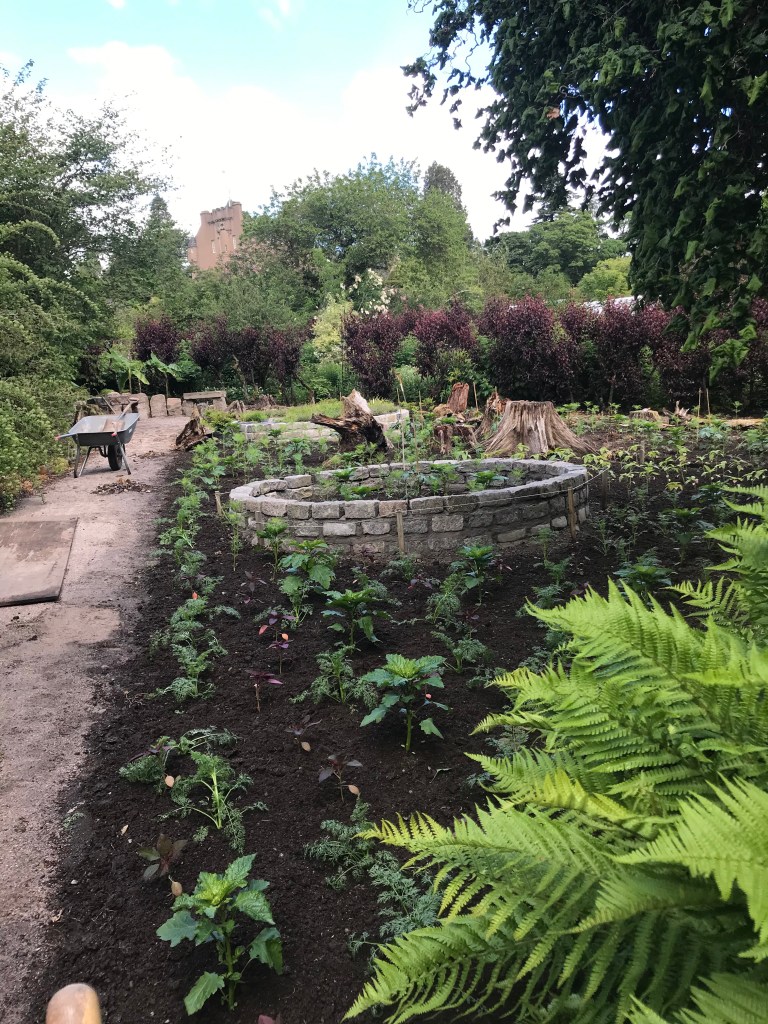
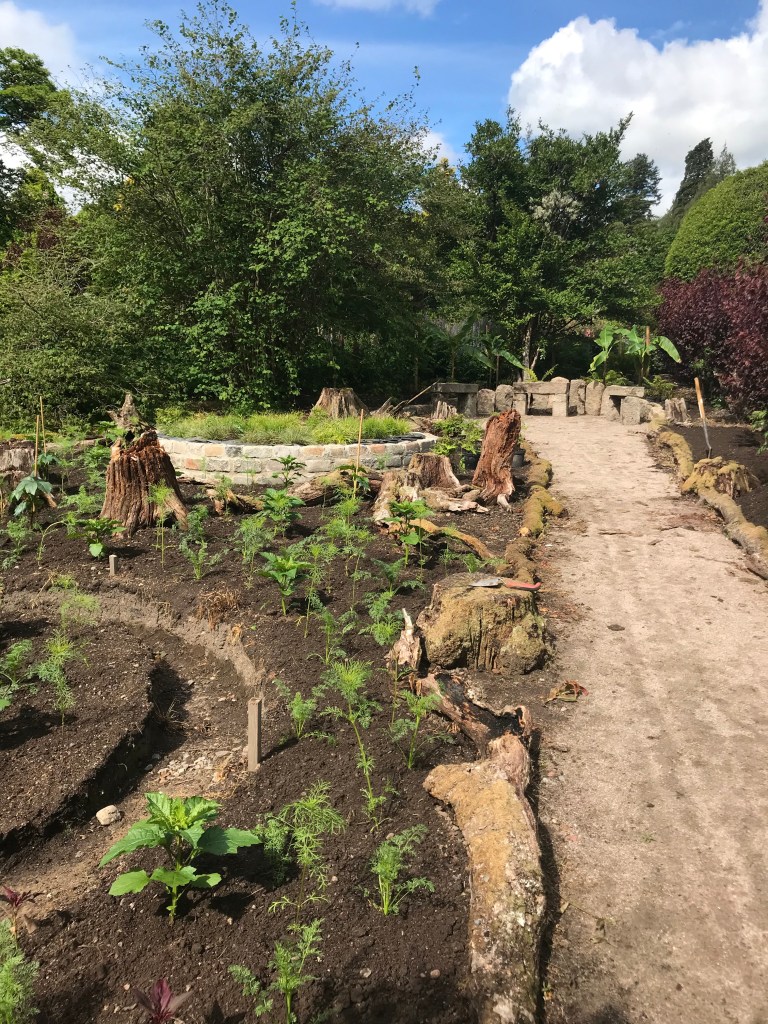
Lilies were always a favourite of Lady Burnett and I expect the Crathes lilies will be looking good. Two unusual ones grow on the South Border: Lilium mackliniae and Nomocharis – I am uncertain of the species. Macklin was the maiden name of Jean Kingdon-Ward (1921-2011). She and Frank, her more famous husband, first found Lilium mackliniae in flower in the Shirui hills in Manipur (north-east India), near the border with Myanmar in about 1947, just after their marriage. Jean was 26 and Frank was 62. They spent the next decade plant hunting together around China, Tibet, India and Myanmar. When Frank died in 1958, Jean, then 37, married Albert Henry Rasmussen who was 75. She lived with Albert in Norway until his death in 1972. An interesting woman on many counts. The beautiful nomocharis is from roughly the same area of the world as L. mackliniae. The Sicilian honey garlic, Nectaroscordum siculum, which is closely related to lilies and alliums grows on the Blue and Pink Border. It is, I expect, in full flower just now.
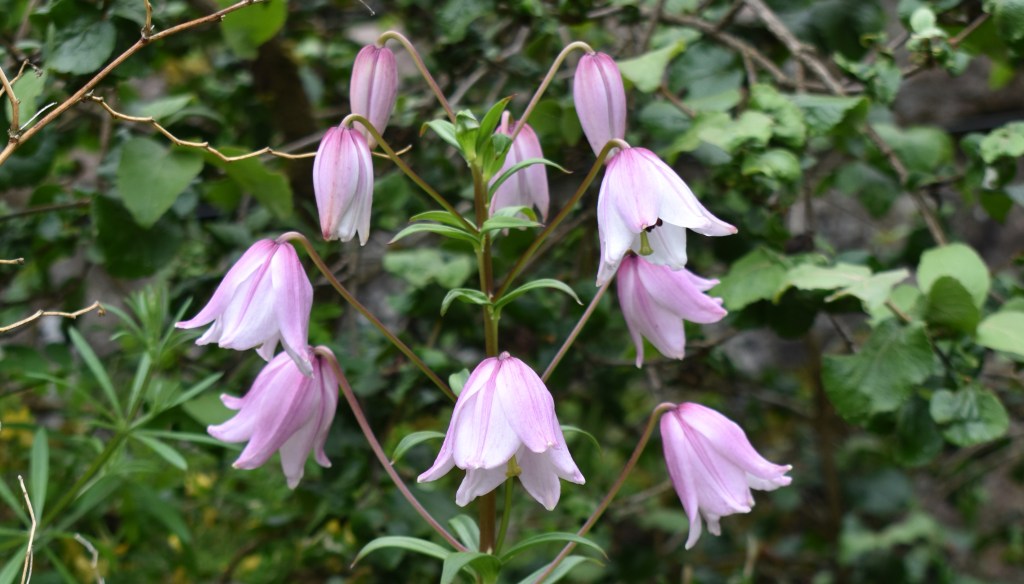


Last week I was on the case of the tree bumblebee, Bombus hypnorum. This particular species, native throughout mainland Europe and Asia was not present in Britain until 2001. By 2013 it was found in the south of Scotland and it was first recorded in the North-East of Scotland in 2019. It’s a distinctive bee with a bright orange furry thorax, a black abdomen and a white tail, so when I saw two in my daughter’s garden (Torphins) I was well pleased. Speaking to a neighbour who is an expert on bumblebees I learnt that the tree bumble bee often nests in bird boxes and that the males can cause a stir in spring and early summer when they appear to swarm – they are in fact all high on pheromones and waiting for the new season’s virgin queens to appear. Imagine my surprise then, two days later, to receive, out of the blue, a video from my friend Audrey Kelman, who now lives in North Berwick, showing the very same bee activity outside her bird box (Audrey used to work at Crathes – that’s how I know her). All this in one week. I know what I’ll be looking out for at Crathes when I return, but since tree bumblebees usually die off in July I won’t have much time this year.

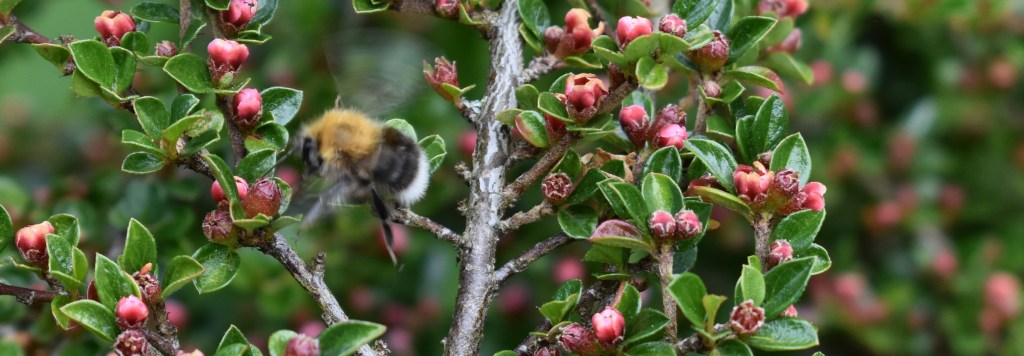
The grassy space now referred to as the Croquet Lawn has been an important feature at Crathes for centuries. Probably it was central to the original garden design, but its use for croquet is more recent, the game becoming popular during Victorian times. I imagine the local croquet players who use the Crathes lawn will be itching to get back to their game – a game that fits well with social distancing. The lawn needs a lot of care with close cutting and edging every week during the season. It suffered badly in the summer of 2018, partly because of the drought and partly because of heavy use when Crathes hosted the BBC’s Antique Roadshow. Prior to that the lawn had been troubled with red thread – a fungal problem. Major treatment was instigated in 2019. The lawn was scarified and a hollow tiner was hired. This machine took small cores of soil out of the lawn leaving hundreds of holes. An expensive mix of fine grained compost and sand (160 bags) was then brushed into the holes. The brushing took a long time – two to three gardeners worked for two or three days. The lawn was top seeded about two weeks later. The plan had been to repeat the treatment this year, but Covid 19 has put that on hold.
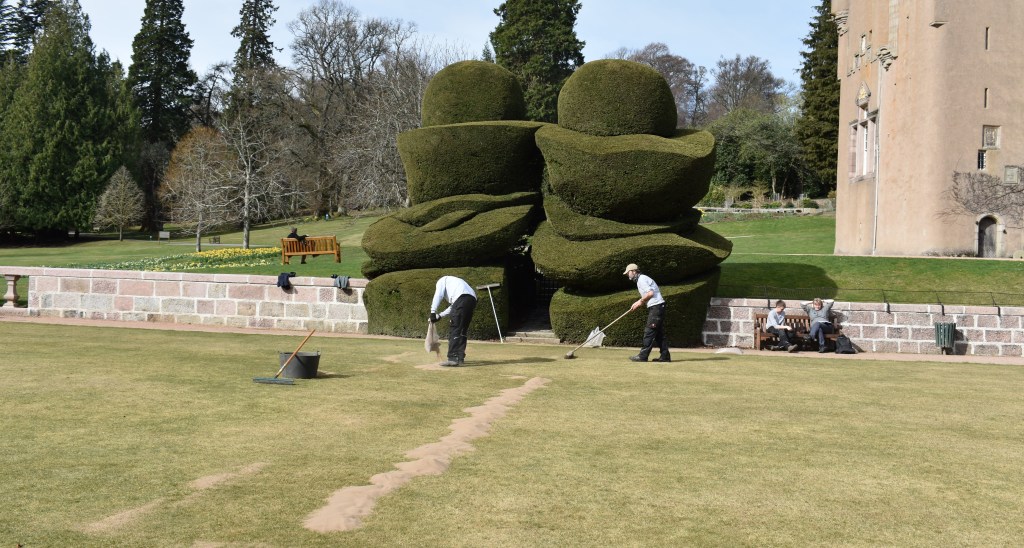
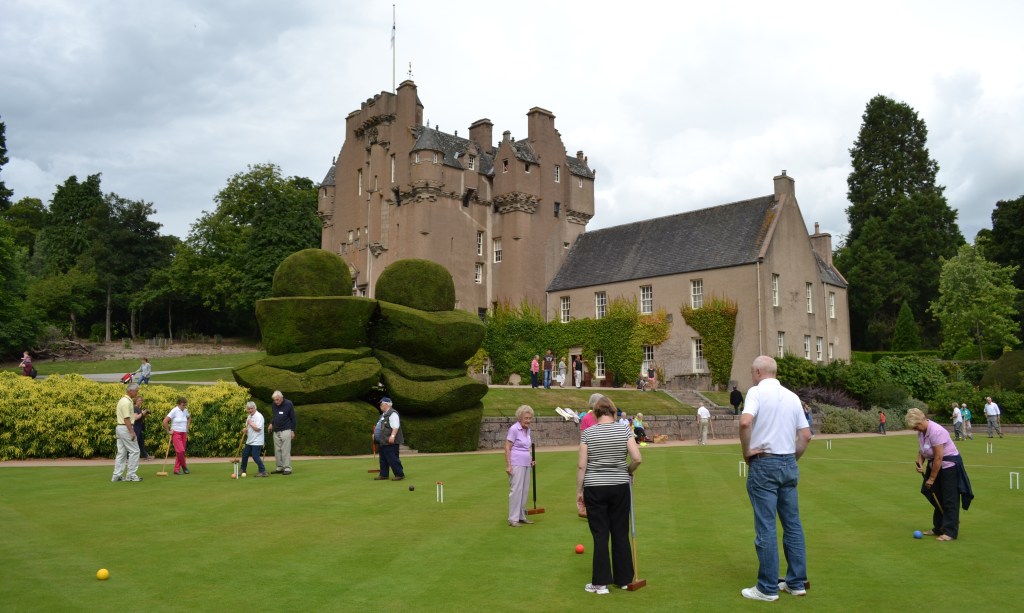
I’ll end with a Crathes speciality: Philadephus purpurascens – special because it is often used in horticultural books as a particularly fine example of the species – which is identified by its purple calyx. Its glorious scent will, I am sure, be pervading the whole garden just now.
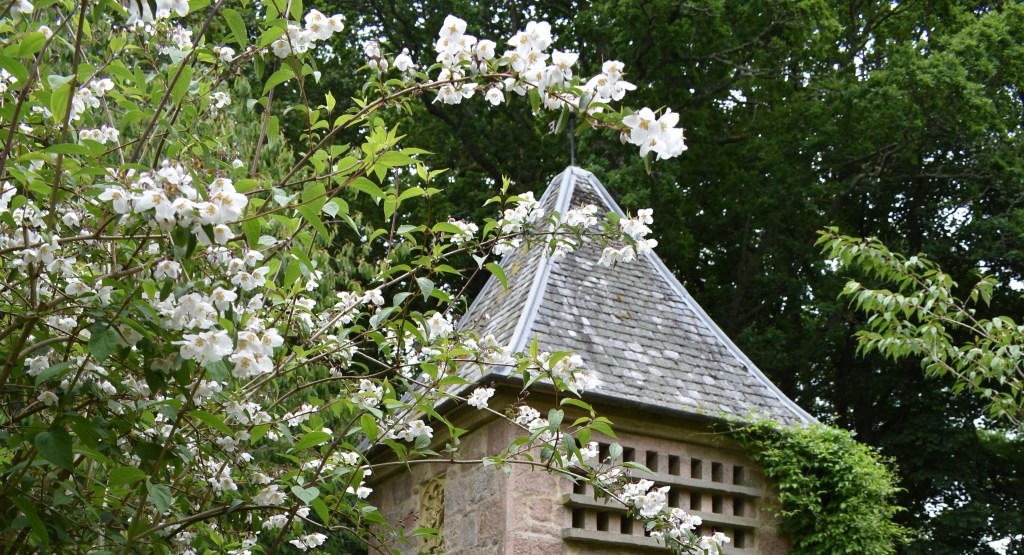

I must again apologise for any slippage. I note that re-visiting old blogs the images have sometimes slipped since the original posts. Someday I’ll maybe get the hang of it all.
Stay save.
Oh I wish we had scent-mail!! Our philadelphus hasn’t done so well this year, possibly due to cutting back too vigorously and at the wrong time… Alkanet in our small border has been a problem – lovely blue flowers which bees love, but it began to overwhelm all the other plants and spread too far. Thank you for yet another fascinating view of this beautiful garden which we hope to be able to visit again …?soon??
LikeLike
Maybe the philadelphus will be better than ever next year Jenny.
LikeLike
Wonderful. Looking forward to getting back.
LikeLike
Oh yes Sandra!
LikeLike